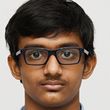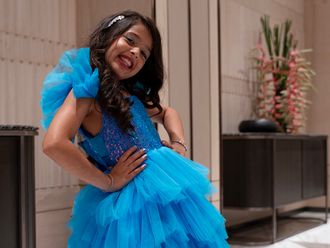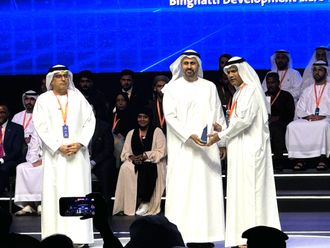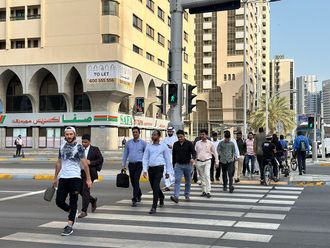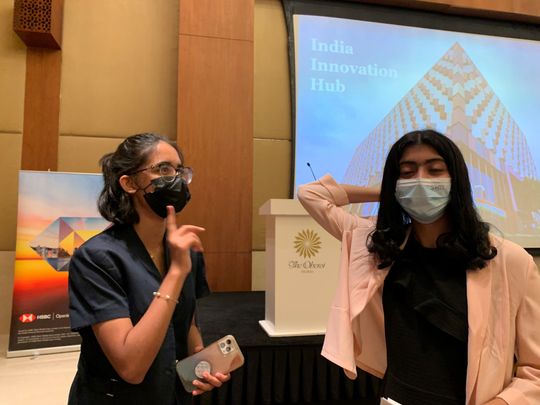
Dubai: UAE students are going all out to make a difference to their community. Students of GEMS Wellington Academy — Silicon Oasis have come up with an incredible initiative for the benefit of senior citizens.
Australian expatriate student Matthew Andreopoulos, 17, in Year 12 of the school, and his batch mate, Indian expatriate Tarun Chandra, 17, have come up with an innovative idea for new mobility solutions. The boys, along with their team of professors, fellow students and experts in the field have designed an ‘autonomous’ wheel chair for the elderly.
Mohammed Al Qaisi, managing director, Otis Gulf, said: “The GEMS Wellington Academy — Silicon Oasis students proposed a connected, motorised wheelchair to help the older population navigate Dubai’s myriad shopping malls, which are also among the largest in the world. Their idea secured them first place in the EMEA region. Globally, 20 schools across 14 countries competed in the challenge."
For the record, Otis Made to Move Communities is an annual global student challenge that inspires students to develop creative, STEM-based solutions to real-world mobility issues in their communities. “The aim is to allow people freedom to connect and thrive in a taller, faster, smarter world,” explained Al Qaisi.
He added: “The number of older adults is projected to double by 2050, according to the United Nations World Population Prospects report. In the UAE, according to Dubai Health Authority (DHA), the ageing population is expected to increase from 6 per cent in 2017 to 29 per cent by 2050. Having access to inclusive mobility solutions that allow the nation’s elderly to remain active, independent and safe within our communities will prove crucial in the coming years.”
“As part of the programme, Otis employees virtually met and mentored us [students] over eight weeks to conduct research and develop innovative ideas for mobility to be inclusive for all,” Matthew added.
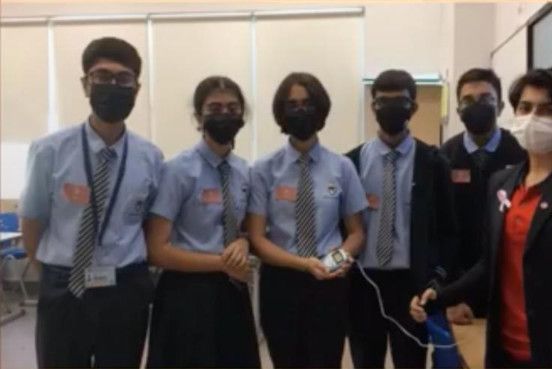
A global panel of Otis judges evaluated the presentations and awarded grants, which would be re-invested in each school or organisation’s STEM programme.
The GEMS Wellington Academy — Silicon Oasis students competed with 42 other students from Europe, Middle East and Africa (EMEA) schools. Tarun said the idea was to develop the prototype further. “Right now what we have created is a physical prototype. We are looking to develop it further along with the Otis team,” Tarun added.
Meanwhile, another set of 12-year-old students from GEMS Modern Academy have been making a difference to the community. Indian expatriate students Shreyram Seetharaman, Samarth Sujeeth and Vihaan Sachin Suvarna have developed an app, a prototype in a software known as Thunkable. The Grade 7 students were ably supported by Eriyat Lakshmi Devi, assistant dean of Studies-Entrepreneurship at GMA.
“We have been able to achieve a successful, working digital prototype. The app serves as a means of registration so that users can register from the comfort of their homes. This will make the drive queue-less and easy to use for people who cannot afford to waste time,” said Seetharaman. “This is only a working prototype. We are waiting for the funding to make this a proper app. After this, it will be available in App Store and Play Store,” added Seetharaman.
“The app serves as a means of registration for our initiative. It provides information about our goals and what we aim to achieve. The information typed by the user will not only be converted into a QR code, which the user will need to save for identification during drop-off, but it will also be uploaded to our database in Airtable, which helps us make sure that the user has registered to ensure security and safety,” said Sujeeth.
The app tells you where to dispose of medicine appropriately. The app is a registration method for users to be able to participate in this drive. It will ask them for information about them to ensure security and register properly. The also provides information about the EcoMedz drive.
Suvarna said the app opens with a page that consists of all our goals that we aim to achieve. “You have an option to learn more about each goal. Next, a loading screen comes with a colourful loading design and some text about what we do. After that, there is a page that gives you an option to choose between donating medicine and disposing of [unused] medicine. The next page is a registration page that asks for important information required to register and ensure security. Finally, there is a page with a QR Code encoded with all the information typed by the user, which will be required during drop-off,” he explained.
Some features of the app include easy and quick registration, unique colour scheme, easy to understand information and time-efficient registration.
Five 14-year-old students from the school’s Grade 10 have developed an armband for people with Parkinson’s disease to lead normal, better lives. The team comprises of Misha Raval, Soham Chakraborty, Arhaan Singh, Advaith Salil Pillai and Tanisha Mathur. The students were guided by their professor Eriyat Lakshmi Devi.
How the armband works
The sleek and modern armband opposes the tremors produced in the victims’ hands. “We have installed a simple device that perfectly opposes the vibrations of the user’s arm. In other words, it helps steady the arm and build arm control,” said Raval.
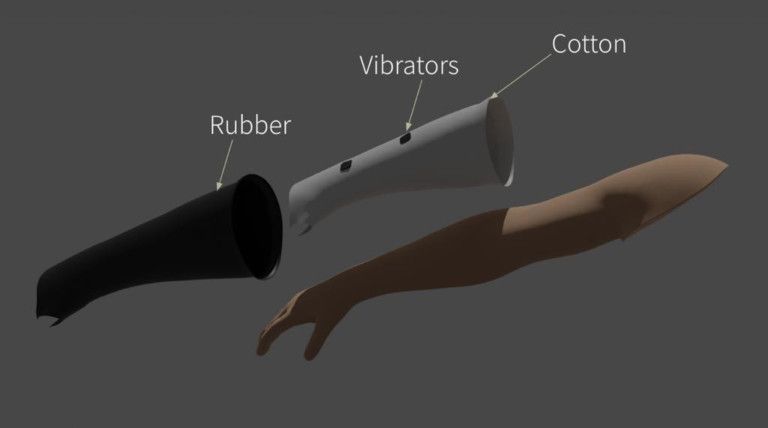
“There are sensors to detect what frequency the tremors are occurring at. Then, setting that speed to be the one at which the armband will produce tremors to nullify quivering of the joints,” she added.
The armband is made up of three layers. The first one is an inner, breathable layer of cotton, followed by high-frequency vibrators, followed by a layer of rubber to ensure that the vibrations don’t spread out of the armband and also to make it waterproof. “We firmly believe that medical equipment can become a fashion statement, so we offer various customisation options such as a huge variety of colours, monogrammed bands and more,” said Soham.
“Our product is well on its way to getting approved from relevant authorities. Our first line of production will definitely start in the UAE and then we will branch out and get approval from different places such as the United States, India and eventually go global,” said Arhaan.
“When it is launched, it will be available in hospitals and clinics for it to be prescribed by doctors. We will also offer tie-ups with insurance companies and even with governments to provide these products at a subsidised rate for people who need them, but might not be able to afford them,” Advaith said.
Read more
- UAE University approves new Masters programme in English and Cultural Studies
- UAE Ministry of Education: Schools, universities can resume all activities, including trips
- Hamdan opens University of Birmingham’s new campus in Dubai
- How Dubai Cares’ participation at Expo 2020 Dubai spawned a new education model
Six months to conceive the product
Tanisha said it took six months to conceive the idea. “We read many research papers and relevant articles and consulted with doctors and even someone who we recently lost after bravely battling with Parkinson’s. We got into the project because of the entrepreneurship and innovation programme at our school. We were selected as part of the top teams and we attended various other events during this time,” Tanisha added.







